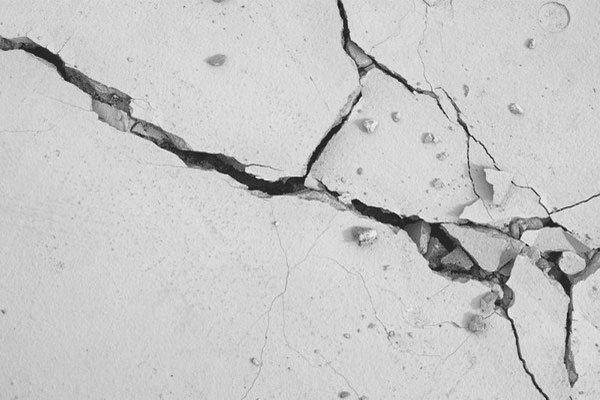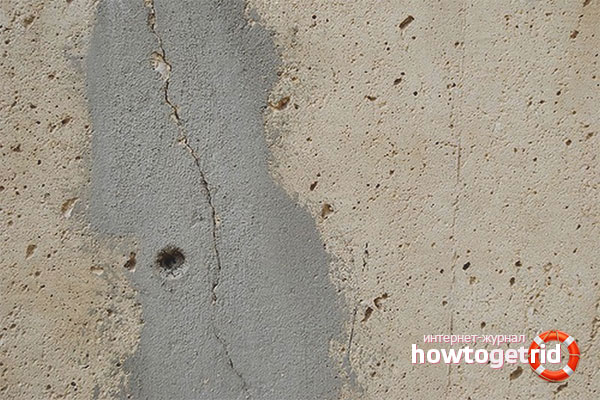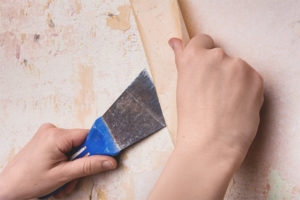The content of the article
Everyone agrees that cracked walls do not look quite aesthetically and correctly. This problem is very important for private and apartment buildings. Because of the cracks, the wallpaper covering comes off, the paint bursts and crumbles, the decoration of the rooms suffers, and other troubles happen, which are simply necessary to get rid of.
This is not completely due to careless builders, various natural phenomena play a big role: earthquakes of different intensity, sediment of the earth, redistribution of groundwater, etc.
It is necessary to realize that it is often impossible to completely shield oneself from such a nuisance, therefore, the arisen problem will have to be (extremely desirable!) Eliminated at its first manifestation. It is logical that eliminating a crack in the "embryonic" state is incommensurably easier and cheaper,than in the later stages in the presence of frightening manifestations.
Why do cracks form and “grow on walls”
The appearance of any cracking, especially affecting the internal structure of structural elements, greatly affects the appearance of the structure, and can also become an essential functional nuisance.
Let us consider in more detail the most common causes of the formation of fracture defects in the walls of houses.
Uneven sediment of some separate fragments of the wall. Probably, any superstructures were mounted above the wall, which created stress dissonance or under-wall soil gave an uneven draft for other reasons. But the result of such trouble is expressed in the "warping" of the structure and the occurrence of stress lines along which the building material is ruptured with the formation of cracks of various configurations.
If the load points are quite strongly displaced, then there is a potential danger of the destruction of the wall section with subsequent collapse of the floor.
In such situation,cracks can be repaired only after the complete elimination of the root causes that led to their formation. The designs themselves also need to be further strengthened.
External natural effectsFor example, sun, frost, wind, rapid temperature changes, etc. Here, cracks often appear precisely in vulnerable areas of frequent exposure:
- the joints between the internal elements and the external walls of high-rise floors;
- stairways;
- places and levels of change of the original construction technology to an alternative method.
When such nuances and specific behavior of building materials are taken into account when creating a project at home, problems with cracks, as a rule, do not appear.
But, if cracking has occurred, the defects can be eliminated by strengthening the “vulnerable spots” by mounting steel holders or by local introduction of a special cement composition.
Concrete drying - also a very real cause of cracks. Such gap-like defects mainly occur on the internal plaster or on the external facades, and more serious through-through - on reinforced concrete elements and structures.
You can fix this problem:
- jointing and high-quality grouting;
- the introduction of aggregate - cement;
- kapron (polyamide) mesh.
Cracks in the wall can occur when the actual strength of the structure and the loads acting on it do not match.
When the construction gets an irregular load distribution during construction, in a short time narrow cracks appear on the walls and pillars, which can “merge” into a large vertical formation. With these phenomena, it is enough to properly strengthen the structure that has begun to collapse. Usually, the walls and columns are subject to strengthening actions, and the walls are closed with special double-sided “shirts” that need to be subsequently plastered.
Repair elimination of cracks in walls
Various tactics and technological developments make it possible to seal wall cracks in many effective ways. For example, to stick wallpaper, place a poster or hang a painting, but such events are a temporary disguise of the existing problem, and not its elimination.
Since cracks are formed due to many reasons, it becomes necessary to assess the situation and decide what to do specifically in a particular case and how to self-patch the crack in the wall.
Brick walls
Important! To repair the elimination of cracks, you can start only after the cessation of its "growth" in the wall brickwork. You can control the increase in defects using beacon paper stickers. If they do not break, for example, in a couple of weeks, the cracking stops!
A small-sized crack (up to 5.0 mm) can be filled with cement mortar. It is first necessary to clean the gap from dust, debris, debris and soak its walls from the inside with water. In order to improve the adhesion strength of the mortar mass with bricks, it is recommended that you embed the edges of the gap, for example, with a hammer or a fender assembly, before embedding it.
The middle slots (size 5.0-10.1 mm) are repaired similarly, but fine sand should be added to the solution.
Any cracks wider than 10.1 mm are considered critical and potentially dangerous. They need to be repaired immediately, for which the following techniques are successfully applied.
- The wall section damaged by cracking is completely disassembled and replaced with a completely new masonry. Strong, “fresh” bricks are stacked according to the technological principle “brick lock” and in the process of operation metal gaskets should be made (reinforcement or elongated plates) that completely overlap the slit formation. The beginning of the masonry disassembly must be carefully started from the overlying brick row.
- You can seal the gap with cement mortar. Here, depending on the length of propagation of the gap defect, metal anchors of T-type are driven into the crack. They are attached to the wall with dowels.
- Filling the gaps in the walls of brick can be expanding in volume with foam. The gap prepared for repair needs to be filled with polyurethane foam, and after drying and hardening of the substance, material should be cut with a recess of about 2.25 cm. This pass must be filled with cement mortar and leveled for subsequent finishing.
- To prevent a cracked brick wall from losing its strength, experts recommend its reinforcement from inside the house.Here it is meant not only embedment, but also a patch on the crack defect of the lock, which is a metal profile. On the wall, the lock is fixed by means of anchors in the transverse direction, blocking across the crack itself. Such a technique will not allow further spread.
- It is possible to use steel brackets with long “legs”, which enter the brick-cement massif to a depth of more than half the wall thickness. Staples require pre-drilling special channels.
- The formation of cracks can contribute to improperly filled foundation. The crack will halt its progression if the foundation is reinforced with an additional concrete belt. To perform such a decision, you need to dig a deep trench around the perimeter of the building so that it exceeds the level of the bottom of the foundation. In this trench, and creates an additional, reinforcing belt.
Concrete walls
For quality repair work will be required:
- large (canvas over 400.0 mm) and small (up to 30.0 mm) spatula;
- hard brush;
- wide reinforced tape or strong gauze;
- sealant (for seams) and any gun model for it;
- sponge.
First, you need to scrupulously clean the cracked area and thoroughly wash the prepared area with a damp sponge. Then, the gap is filled with sealant.
Tip! To smooth the injected composition at the surface of the wall, you need to smooth out the applied material with your finger. The finger must be constantly moistened in a highly concentrated solution of absolutely any detergent!
In addition to the above method, it is possible to eliminate cracks in the wall with concrete using ordinary PVA glue and cement mortar. First of all, the surface of the defect is cleaned, and then PVA glue is abundantly applied. The crack treated by this method is tightly filled with cement mortar, followed by smoothing the material with a spatula to match the level of the wall surface.
Any other actions on the concrete surface (finishing, priming, etc.) can be performed after setting and drying the mortar.
Video: how to seal a crack in the wall













To send